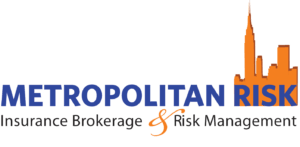Blizzard of 2010: Snowplowing NYC
This December’s snow storm literally froze over New York City and it’s surrounding areas. The usual hustle and bustle of taxis, buses, subways, trains, and crowds of commuters rushing to work and sightseers, and the after Christmas shoppers were no where to be seen. The city was deserted. Many people complained about the lack of plowing and coordination. Why was the city unable to function during and after this blizzard when life and the city’s ordinary activities were unaffected in past blizzards? The city roads are divided into 3 categories: arterial, secondary, and tertiary. Arterial streets are main roads where buses pass and are plowed first. Secondary roads connect to the arterial streets. Tertiary streets are residential streets which are narrow and may be curved, and are lowest on the plowing agenda. Roads are also numbered by priority. These roads are reviewed every year by the sanitation districts. Before the storm was in full force, 365 salt spreaders hit the streets, 1,700 garbage trucks with plow shovels started working as soon as 2 inches accumulated. Usually the secondary streets would have been plowed, but the wind and snowdrifts kept the plows on the arterial streets. Abandoned cars and other obstacles made plowing difficult and caused some trucks to become stuck. Plowing the secondary streets caused plows many problems because of the massive amount of snow; there was no where to push the snow. About 900 day laborers were hired in preparation for this snow storm to shovel sideways and bus stops and extra help was hired to operate dump trucks and other heavy machinery.
This may be the last blizzard of the year, but it’s still the very beginning of the Winter season. If no workers were injured on the job this past weekend, don’t assume that no one can seriously injure him/herself the next time a blizzard or even a small snow dusting occurs. It’s important to make sure you follow the Occupation Safety and Health regulations to prevent risks to your workers and to protect your business’ experience mod., finances, and reputation. If you are unsure of your risks, have questions about your New York General Liability Coverage, New York Business Insurance, New Jersey General Liability Coverage, or New Jersey Business Insurance, contact Metropolitan Risk Advisory.
This December’s snow storm literally froze over New York City and it’s surrounding areas. The usual hustle and bustle of taxis, buses, subways, trains, and crowds of commuters rushing to work and sightseers, and the after Christmas shoppers were no where to be seen. The city was deserted. Many people complained about the lack of plowing and coordination. Why was the city unable to function during and after this blizzard when life and the city’s ordinary activities were unaffected in past blizzards? The city roads are divided into 3 categories: arterial, secondary, and tertiary. Arterial streets are main roads where buses pass and are plowed first. Secondary roads connect to the arterial streets. Tertiary streets are residential streets which are narrow and may be curved, and are lowest on the plowing agenda. Roads are also numbered by priority. These roads are reviewed every year by the sanitation districts. Before the storm was in full force, 365 salt spreaders hit the streets, 1,700 garbage trucks with plow shovels started working as soon as 2 inches accumulated. Usually the secondary streets would have been plowed, but the wind and snowdrifts kept the plows on the arterial streets. Abandoned cars and other obstacles made plowing difficult and caused some trucks to become stuck. Plowing the secondary streets caused plows many problems because of the massive amount of snow; there was no where to push the snow. About 900 day laborers were hired in preparation for this snow storm to shovel sideways and bus stops and extra help was hired to operate dump trucks and other heavy machinery.
This may be the last blizzard of the year, but it’s still the very beginning of the Winter season. If no workers were injured on the job this past weekend, don’t assume that no one can seriously injure him/herself the next time a blizzard or even a small snow dusting occurs. It’s important to make sure you follow the Occupation Safety and Health regulations to prevent risks to your workers and to protect your business’ experience mod., finances, and reputation. If you are unsure of your risks, have questions about your New York General Liability Coverage, New York Business Insurance, New Jersey General Liability Coverage, or New Jersey Business Insurance, contact Metropolitan Risk Advisory.
